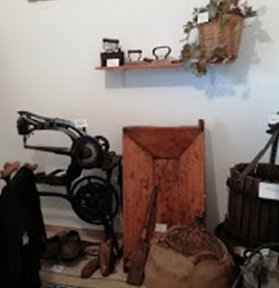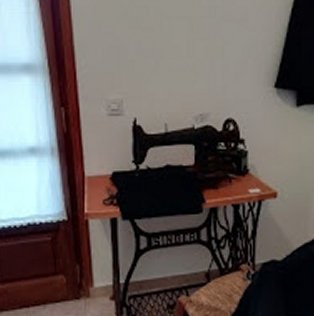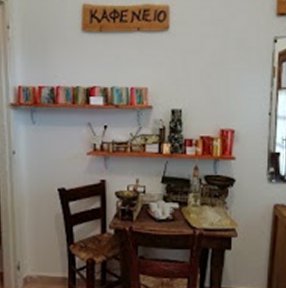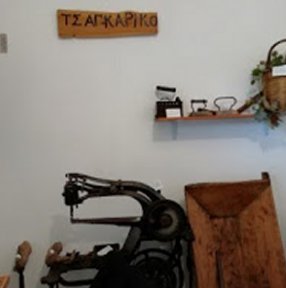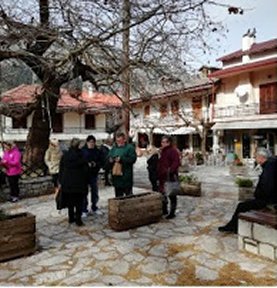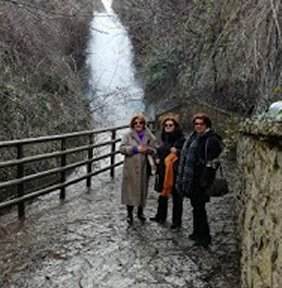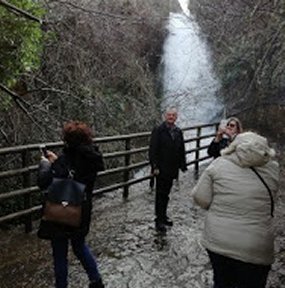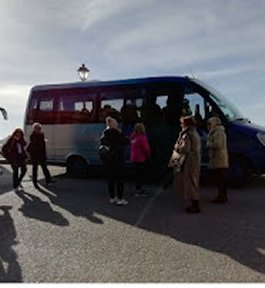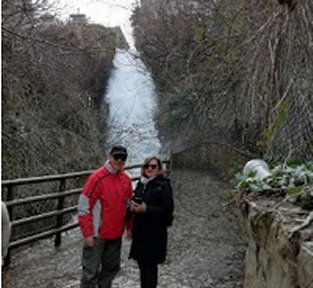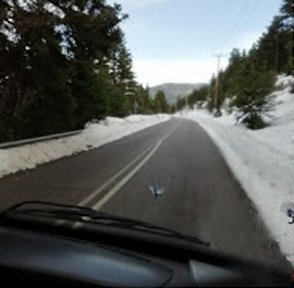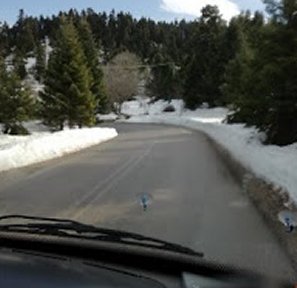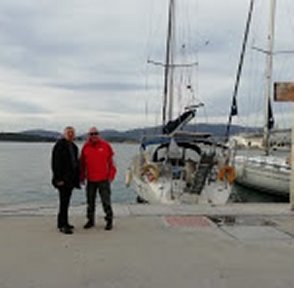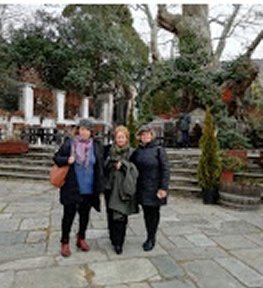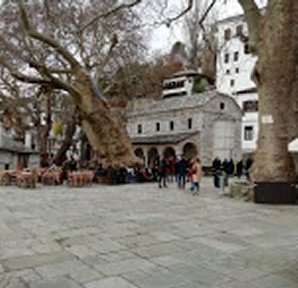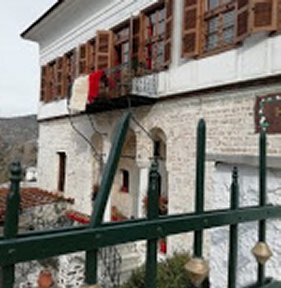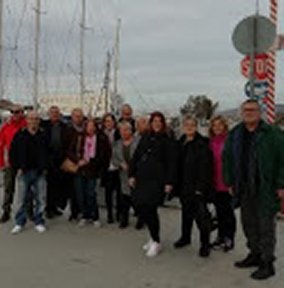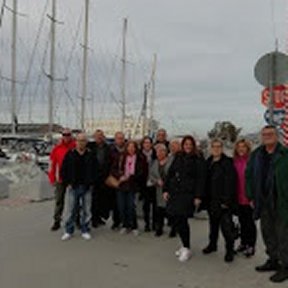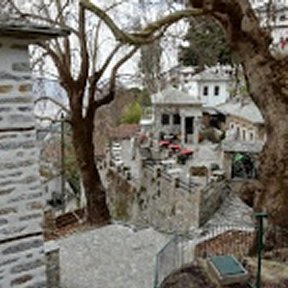F.O.L. - CULTURAL SOCIETY LONGOS "LORD BYRON"
ACTIVITIES OF THE CULTURAL SOCIETY LONGOS
The Managing Committee of Longos Cultural Society "Lord
Byron" organised in cooperation with MATTHEOS-TOURS/Egio
an EXCURSION to AGORIANI
(Eptalofos)
VOLOS
PELIONfrom Saturday, February 2 to Sunday, February 3, 2019.
Service charge: : 70,00 EURO per person
|
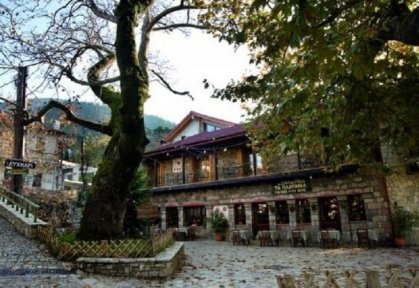
|
|
The price included the LUXUS bus ride, one overnight stay with breakfast in the hotel «Alexandros» in Volos and the overnight stay tax according to law 4389/2016.
More information and inscription:
Despina Manolopoulou, phone 6984 14 2411
Dimitra Prinou-Tsamtsouri, phone 6976 61 6337
Eleni Ntourou, phone 6974 66 8577
With the registration we ask for a deposit of 35,00 EURO. The balance must be paid by 25 January 2019.
|
PROGRAM
DAY 1: 7.00 a.m. Departure from Longos and ride via Rio-Antirrio and Itea to Arachova. Coffee break and carry on driving along a magical mountain route to Agoriani (Eptalofos). Stop for lunch and leisure. Continue to Volos, check in at Hotel "Alexandros" and free time out. Overnight stay in Volos.
DAY 2: After breakfast drive to Portaria and Makrigitsa, the most beautiful village of the Pelion - the balcony of the Pagasitic Gulf and Volos. Departure to Hania, lunch and stay. After lunch, drive via Volos and Lamia to Amfissa, where you will rest. Arrival in the evening in Longos.
|
Agoriani
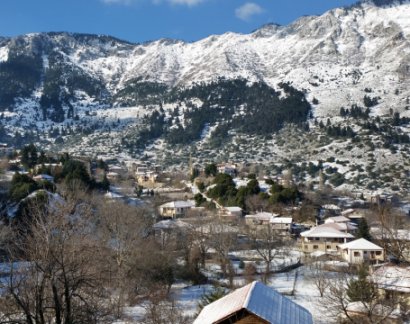
|
Agoriani or Eptalofos is a village in the prefecture of Fokida at an altitude of 830 to 940 meters on the northeastern slopes of Parnassos. Eptalofos has in recent years had a great tourist development due to the short distance that separates it from the ski resorts of Parnassos, as well as its location in a beautiful fir forest. During the winter months the village is often covered in snow.
Eptalofos suffered great damage under the German occupation, when in
October 1943 as retaliatory measure for rebel actions in the region it was almost completely burned. Of the 184 houses, 146 were burned to the ground. 17 civilians were executed, seven of them from the same family.
|
Folklore museum of Agoriani
Folklore museum of Agoriani
Folklore museum of Agoriani
Volos
Volos is a city in Thessaly, located on the Pagasitikos Gulf near the ancient Iolkos and at the foot of the mountaim of the centaur Pelion. It is one of the largest cities and one of the most important ports in Greece.
The area around Volos, the ancient Magnesia, belongs to the first areas inhabited in Greece. The settlements discovered in the surrounding villages of Sesklo and Dimini date back to the 7th millennium BC. The cultural presence in the region is uninterrupted until today.
|
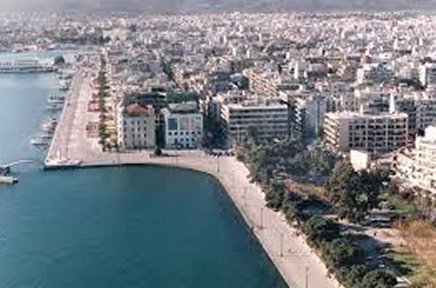
|
|
World War II has temporarily affected the development of the city. From
1941 to 1944 Volos was occupied by the Italian army and later by the
German Wehrmacht. This period is the only time in which the population
of the city declined. Many members of the resistance groups as well as
civilians found a tragic death in the streets of the city, in the
execution sites (e.g. the Freedom Square) and in the infamous "Yellow
Warehouse", which was used as a prison by the Germans and their
collaborators. The Jewish community of Volos, one of the oldest in
Greece, had the lowest losses compared to all other Jewish communities
in Greece, thanks to the early intervention and mobilization by the
resistance organizations EAM and ELAS, as well as the successful
communication of the metropolitan bishop of Demetrias, Ioakeim, with the Archrabbi of Volos, Moses Pasha. The evacuation of the Jewish citizens of Volos, especially after the events of Thessaloniki (expulsion of the city's Jews to concentration camps), could thus be carried out successfully. Today the Jewish community of Volos counts only a hundred souls because most of the Jews left Volos after the war to settle in Israel or elsewhere.
After the war, Volos became one of the most important areas of Greece in economic and demographic terms.
Places of interest and museums (selection):
• The castle of Volos in today's old town in the West of the city was built in the middle of the 6th century AD. In the underground car park of the "Village" building complex in Palaeos district impressive Roman baths can be admired.
• In Anavros Park, opposite the museum, representative examples of modern sculpture can be seen. In 1988 a symposium of Greek and foreign sculptors took place in the city, whose participants donated all the works of the city of Volos and who today decorate the park.
• The "House with the Rose" at the intersection of the streets Anthimos Gazi and Vlachava, where the paintress Chrysoula Zogia lived.
• The Museum of the City of Volos, which tells the history of the city and the city of refugees, Nea Ionia, through rare photographic material, audio testimonies and selected objects. Unique periodic exhibitions are also held here throughout the year, covering all scientific disciplines and periods of local history. The museum is a model of its kind throughout Greece and has been awarded by the Benaki Museum.
• The Archaeological Museum of Volos contains finds from the wider surroundings of Magnesia (Iolkos, Ferries, Demetrias) from prehistory to Roman times.
• The folklore centre Kitsos Makris is located in the house of the folklorist in the Kitsou Makri Str. 38. It belongs to the University of Thessaly and includes the folklore collection of the great researcher with unique exhibits, 4,000 books of his Library, 2,500 slides and 4,000 photographs, many of which show treasures of folk tradition that are no longer preserved today.
• The Typography-Museum of the since 1898 published Newspaper "Thessalia" is a unique typographic museum. On 350 sqm in the newspaper publishing house in the Industrial area of Volos is shown a hundred-year history of technological development.
• The Natural History Museum of Volos is located in Mikrasiason Street 1 and houses fossils, minerals and fossils from Thessaly and all over Greece.
• The Thessaly Railway Museum is located in the upper floor of Evaristo de Chirico station, unchanged since 1882. Rich railway material and documentation are exhibited.
|
Portaria

|
Portaria is a traditional settlement of the prefecture of Magnesia, built on the western slopes of the Pelion north of Volos. It is an important village in the region, strongly grown in the past. Its population lives today mainly thanks to the tourism business.
Portaria was one of the main centres of the Revolution of Thessaly in 1878. With the liberation of Thessaly in 1881, it became part of the Greek State and was the seat of the municipality of Ormini. Since 2011 Portaria belongs administratively to the municipality of Volos.
|
Makrinitsa
|
Makrinitsa, built on the western slope of the Pelion north of Volos, is one of Greece's most touristic mountain villages and famous for its traditional flair, its unique architecture of Pelion and a unique view of Volos and the Pagasitic Gulf. For this reason it is also called the "Balcony of the Pelion".
On the beautiful village square of Makrinitsa you can find Theofilos Cafe, which is well known throughout Greece and abroad for a painting of the famous folk painter Theofilos Chatzimichael (* about 1870 in Lesbos; † 22. March 1934 just there). Today the building is owned by the municipality of Makrinitsa.
|
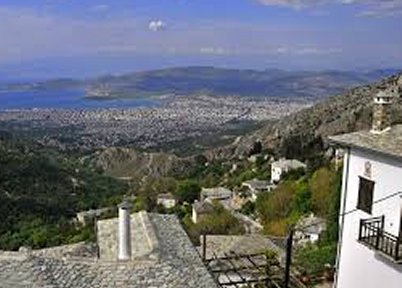
|
|
The mural depicts a festival in the Katsantonis camp in a natural environment with a river in the lower part. Katsantonis, a dominant figure, stands out from his comrades by his larger figure, carries a weapon and plays tamboura. The other fighters spear lambs, make music, sing and dance. In an article on Theophilos, the great architect Le Corbuisier writes: "... He is a painter who was born from the Greek landscape. Through Theofilos, here the landscape and the people of Greece: reddish earth, pine and olive groves, sea and mountains gods, people who are bathed in bold, calm serenity ... ".
On the central square of Makrinitsa you can also find the Byzantine Museum of Makrinitsa, what shows exhibits from the 13th century. It is unique in its kind for the entire region and also runs special educational programmes for schools and educational institutions.
|
Hania

|
Hania is a mountain settlement of the prefecture of Magnesia. It is
located at an altitude of 1,190 meters on the slopes of the Pelion and
is thehighest mountain settlement of the prefecture of Magnesia on the
provincial road from Volos to Zagora, 26 km from Volos. The village
received his name from the old khans, the roadside inns where travelers could rest and recover from the day's journey.
Hania belongs to the town of Volos, municipality of Agria, and has 57 inhabitants (population census of 2011). Hania runs the ski centre of Pilion and therefore attracts many visitors during the winter months.
|
<- back




